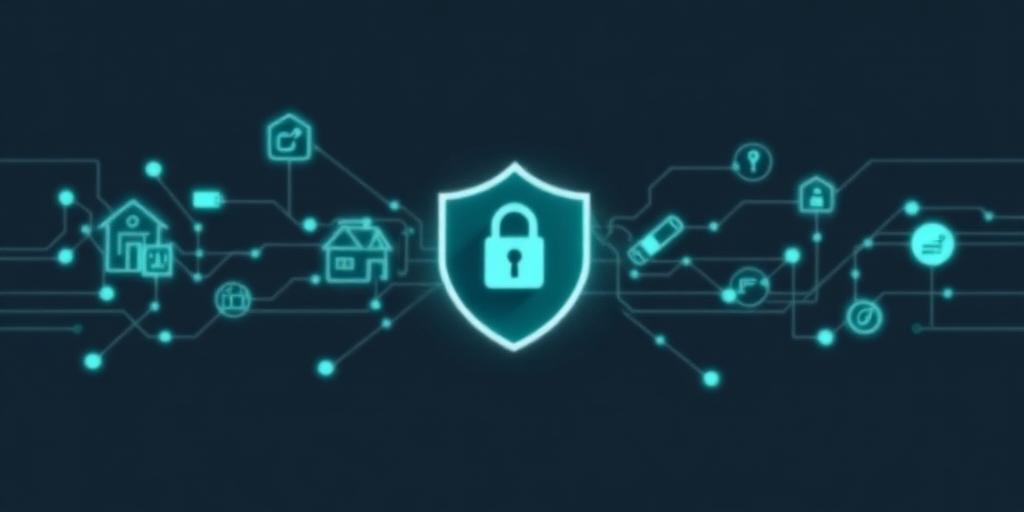The burgeoning landscape of the Internet of Things (IoT) has ushered in an era of unprecedented convenience and connectivity. From smart homes to wearable health monitors, IoT devices seamlessly integrate into our daily lives, collecting vast amounts of data to enhance user experience. However, this profound integration brings with it significant challenges, none more critical than the imperative of user privacy. As industry experts, we must unequivocally assert that robust user privacy is not merely a feature, but a foundational pillar for the sustainable growth and trust in the IoT ecosystem.
Understanding the IoT Privacy Imperative
At its core, IoT privacy refers to the protection of personal and sensitive information gathered by interconnected devices. Unlike traditional computing, IoT devices often operate discreetly, gathering data from our physical environments and personal habits without overt user interaction. This data can range from simple usage statistics to highly sensitive biometric information, location data, and even intimate details about our daily routines. The sheer volume and granularity of this data present a unique privacy challenge, demanding a proactive and comprehensive approach.
The Data Deluge: Risks and Ramifications
The pervasive nature of IoT devices means an exponential increase in data collection points. Every smart thermostat, security camera, and fitness tracker is a potential conduit for personal information. The primary risks associated with this data deluge include:
- **Unauthorized Access and Breaches:** Malicious actors can exploit vulnerabilities in devices or networks to gain access to personal data, leading to identity theft, financial fraud, or even physical security risks if devices like smart locks are compromised.
- **Data Misuse and Secondary Use:** Information collected for one purpose might be repurposed without explicit consent, leading to targeted advertising, surveillance, or even sale to third parties. Understanding IoT device privacy concerns is paramount here.
- **Surveillance and Profiling:** The aggregation of data from multiple IoT devices can create a highly detailed profile of an individual, raising concerns about privacy erosion and the potential for intrusive monitoring by corporations or governments.
- **Lack of Transparency:** Users often lack clear understanding of what data is being collected, how it's stored, and who has access to it. This opacity undermines user control over their own digital footprint.
Establishing a Secure and Private IoT Ecosystem
Addressing these challenges requires a multi-faceted strategy involving device manufacturers, software developers, policymakers, and end-users. Implementing best practices for IoT privacy is crucial for fostering trust.
Manufacturer and Developer Responsibilities:
- Privacy-by-Design: Integrate privacy considerations into every stage of product development, ensuring data protection is inherent, not an afterthought. This includes minimizing data collection, anonymizing data where possible, and employing strong encryption. Securing personal information in connected homes starts here.
- Robust Security Measures: Implement advanced security protocols, regular firmware updates, and vulnerability management to protect against cyber threats.
- Transparent Policies: Clearly articulate data collection, storage, and sharing practices in user-friendly language, making it easy for users to understand and manage their privacy settings.
- User Control: Provide intuitive mechanisms for users to manage their data, revoke consent, and delete information when desired.
Regulatory Frameworks:
Global regulations like GDPR (General Data Protection Regulation) and CCPA (California Consumer Privacy Act) provide crucial guidelines for data protection. These frameworks emphasize consent, data minimization, and the right to be forgotten, setting a precedent for protecting user data in smart devices globally. Further specialized regulations for IoT are anticipated and necessary to truly protect user data.
User Empowerment:
While industry and regulators bear significant responsibility, users also play a role in safeguarding their privacy. Simple steps include choosing reputable brands, reviewing privacy policies, configuring privacy settings, and regularly updating device software. Education on data protection for internet of things is vital.
The Path Forward
The future of IoT hinges on a covenant of trust between providers and users. Without a steadfast commitment to user privacy, the incredible potential of connected devices risks being overshadowed by apprehension and regulatory friction. By prioritizing privacy-by-design, implementing stringent security, fostering transparency, and empowering users, we can collectively build an IoT ecosystem that is not only innovative and efficient, but also fundamentally respectful of individual privacy rights. This is not merely an ethical imperative; it is an economic necessity for sustained adoption and success.









